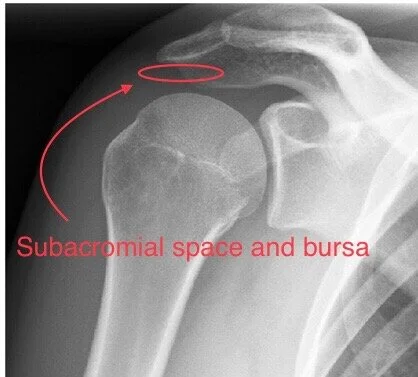
Shoulder impingement
What is shoulder impingement ?
Four muscles with their corresponding tendons (known as the rotator cuff) work as a team and move the shoulder in a coordinated manor. The tendons pass in a space under the roof of the shoulder joint (acromion) known as the subacromial space. Overlying the tendons there is a fluid filled area of tissue - subacromial bursa. The subacromial bursa helps the rotator cuff tendons move smoothly beneath the acromion.
Conditions which effect coordinated rotator cuff function can result in abnormal shoulder movement which in turn causes irritation and inflammation to the subacromial bursa.
Watch a YouTube video (button below), created by Lennard Funk, explaining the process subacromial impingement.
Diagnosis
A detailed history and shoulder examination will provide many clues to the cause of the symptoms.
Further routine investigations include a shoulder X-ray and ultrasound scan to aid making the right diagnosis.
Treatment
Pain medication - may help reduce pain and inflammation of the effected tendons.
Physiotherapy - maintains shoulder movement and strength which can reduce the irritation.
Shoulder subacromial space injections - steroid injections, correctly placed, can reduce pain and inflammation of the effected tendons.
Arthroscopic shoulder surgery - Rarely keyhole surgery can be performed to remove the inflamed subacromial bursa.
‘A well placed steroid injection plus specialist shoulder physiotherapy can treat the majority of shoulder impingement’
Recovering after arthroscopic shoulder impingement surgery
After surgery a sling is required for 2 weeks while in bed and when outdoors
Rehabilitation with physio starts immediately
Avoid getting the wounds wet until stitches are removed between 10-14 days
Driving is not advised for around 6 weeks following surgery
Returning to work depends on the nature of your job - (office based 4-6 weeks / manual work 8-12 weeks)
No contact sports or heavy lifting for at least 3 months following surgery
